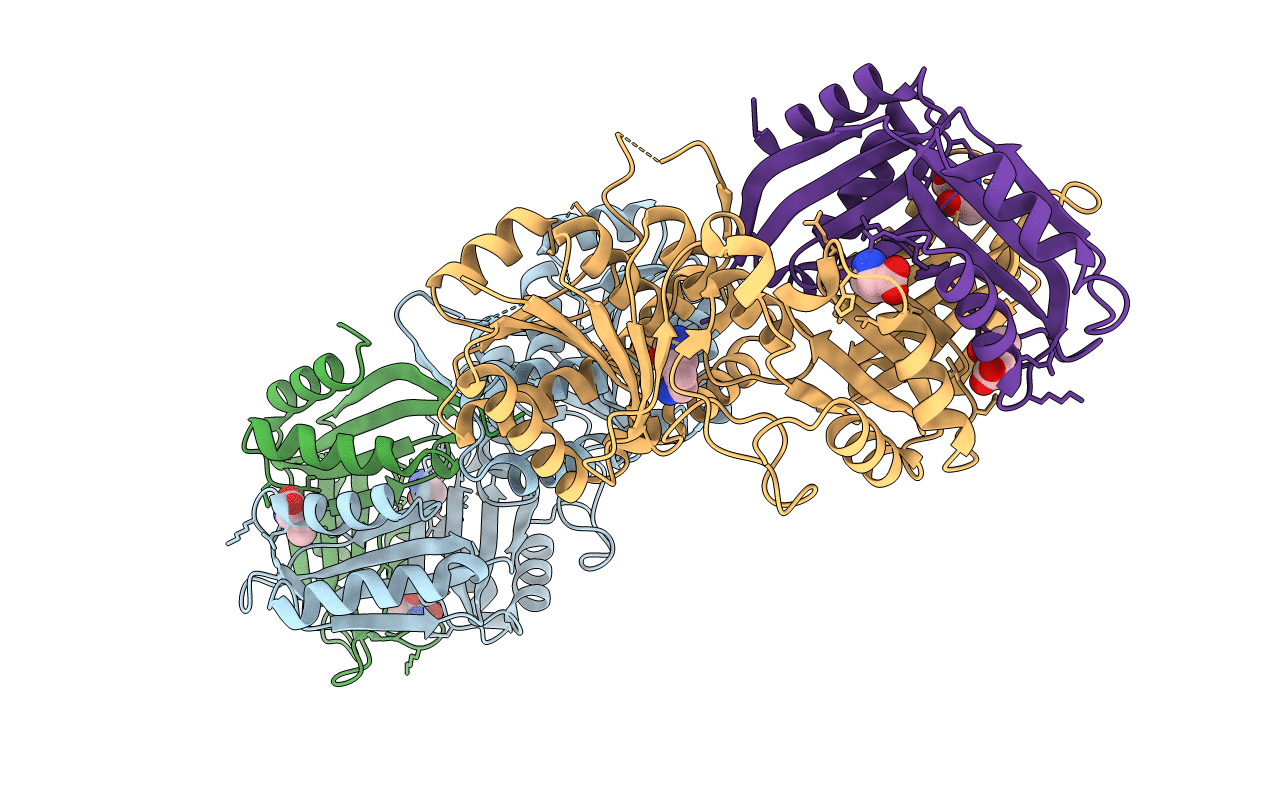
Deposition Date
2009-11-27
Release Date
2010-06-23
Last Version Date
2023-11-01
Entry Detail
PDB ID:
3AAW
Keywords:
Title:
Crystal structure of aspartate kinase from Corynebacterium glutamicum in complex with lysine and threonine
Biological Source:
Source Organism:
Corynebacterium glutamicum (Taxon ID: 1718)
Corynebacterium crenatum (Taxon ID: 168810)
Corynebacterium crenatum (Taxon ID: 168810)
Host Organism:
Method Details:
Experimental Method:
Resolution:
2.50 Å
R-Value Free:
0.25
R-Value Work:
0.20
R-Value Observed:
0.21
Space Group:
I 4


